
17 minute read
The magnificent Khalid and his flying machines
from 2011-08 Melbourne
by Indian Link
What good is wanting to do something without going on and doing it? Khalid’s life has been a rich example of living one’s passion – planes in his case
BY RAJNI ANAND LUTHRA
Khalid Ally glows with pride as he describes his latest toy – a Yak 54.
“It’s a Russian made aerobatic sports plane. I’ve fitted a 55cc engine on to it and it roars beautifully as it flies”. Ally acquired it six months ago as an ARF (‘almost ready to fly’) and assembled it himself, fitting in the engine and radio.
He flies it at his local aeromodelling club, the Peninsula Aeronautical Radio Control Society (PARCS) in Carrums Down, Melbourne.
The Yak is one of 23 other model planes in Ally’s collection. The flying machines have taken over the garage at his Rowville home, while the car lives outside.
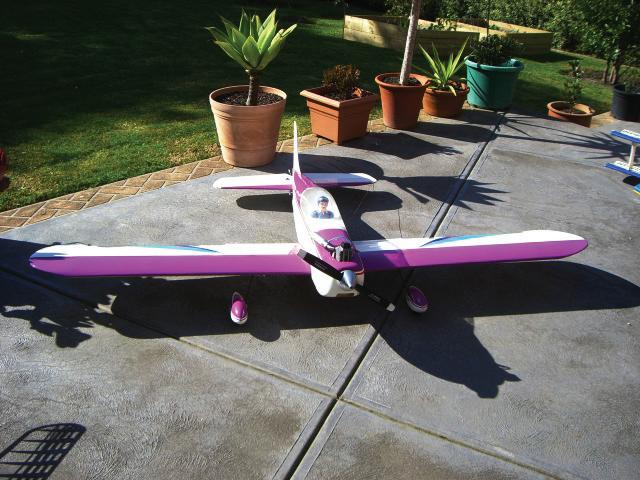
Antique models
“Some of my models are antique aeroplanes, made before 1938,” he reveals. “I am also a member of the Society of Antique Modellers (SAM), a group of ‘old-
He grew up with planes, given his father was an aeronautical engineer.
“My father flew planes in the UK between 1928 and 1932. Then he came back to India and became inspector of aerodromes. My older brother, who passed away recently, was equally passionate about flying. He joined the Indian Air Force. He was my mentor in many ways, and I followed him into the Air Force”.
War fighter
As a fighter pilot, Khalid saw action in two of India’s wars.
“In the 1965 war, I was attached to the Indian Army, supporting them on access to Lahore. In 1971 though, I was in the midst of all the action in the eastern sector, even flying into Bangladesh territory. I flew a Gnat Mark 1, performing escort duties for attacking planes. I also made some strafing sorties and launched light rocket attacks on small movements on the ground. I was present at the ultimate surrender at Dhaka; my brother was there too”.
Although some forty years have passed, Khalid remembers the two wars vividly.
“They were what I had trained so many years for, and it was great to be able to put it all in practice and do my bit for the country”.
The Yak is one of 23 other model planes in Ally’s collection. The flying machines have taken over the garage at his Rowville home, while the car lives outside small aircrafts many times with friends. timers’ who love their free-flight models. In older times, we would fly them and then race after them on bicycles to see where they’d landed… but now we have radios fitted on to them so we can get them to land where we want to”.
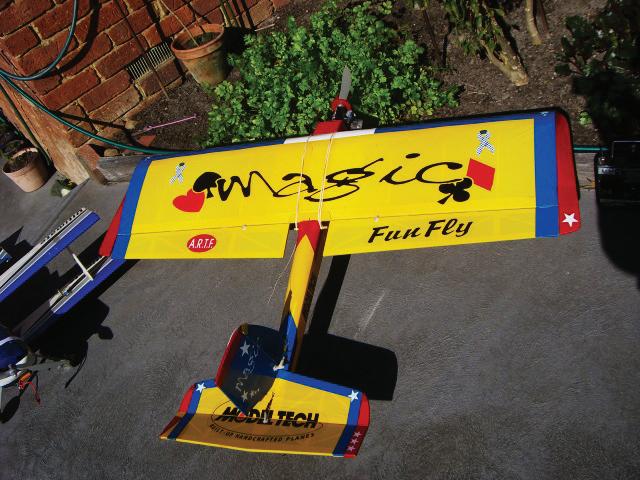
Following his passion for aeromodelling, was but natural.
“It was much easier here to procure equipment than in India,” he stated. “And by then my son Daud, an electrical engineering student, was hooked as well, so we became involved in a major way”.
They joined the aeromodelling club PARCS, and Khalid even served some years on its executive.

Khalid has even flown competitively. “Many clubs around Melbourne hold competitions, and then there are some good ones I go to at Bendigo, Ballarat and Canoundra. The competitions are all professionally conducted and we decide a year in advance based on the calendar of events which ones we will go to”.
And how often do the machines get an airing?
“It all depends on what the mood is in the morning!” Khalid laughs. “Some of the older ones, I’ll take out the day before and recharge batteries etc. For some that I know I will not be flying for some time, I’ll put some after-run engine oil and store away carefully”.
The 68-year-old ex Indian Air Force officer (he retired in 1988 as Wing Commander) has been passionate about planes for as long as he can remember.
“I built my first plane in 1948 as a 5 year old,” he recalls fondly, “with some pieces of balsawood I’d stuck together!”

“In the 1965 war, I was attached to the Indian Army, supporting them on access to Lahore. In 1971 though, I was in the midst of all the action in the eastern sector, even flying into Bangladesh territory”
Khalid Ally
Soon after, Khalid became Chief Flying Instructor at the Air Force’s training academy. It was in this position that a downturn in health occurred – Khalid suffered a heart attack in 1986 and underwent bypass surgery the following year. Grounded from flying, Khalid opted for premature retirement.
“My wife and I settled in Noida in Delhi, but her family had already migrated to Australia. We decided to put in our migration papers as well, so as to join them”.
Migration to Australia
The Ally family arrived here in 1992. And although he hasn’t flown since, he has been in
Another aspect of it all that Khalid is passionate about is his role as instructor.
He is registered with the MAAA (Model Aeronautical Association of Australia), the governing body for aeromodelling in this country, as a qualified instructor.
“I have ‘students’ of all ages. One current enthusiast is 65, and recovering from cancer. His family presented him with a glider and he came to me keen to learn. I am quite pleased to report now that he has a fair degree of competency, and it is a pleasure to see him enjoy his time out on the field”.
Khalid’s own son Daud has kept up his interest in aeromodelling as an adult.
“He is very good, I must say,” Khalid says of him. “And what is very satisfying for me, is that my three grandchildren are also all involved. Especially the youngest, 5-year-old Aaliya – she seems a natural! At a recent demonstration for the Indian Senior Citizens’ Club ISCA, she flew her helicopter so beautifully that even I was surprised. Twelve-year-old Fauzia and 10-year-old Ashraf are also good”.
As an instructor, Khalid is keen to see more youngsters take up the sport. “I’d like to see this continue on into the next generation, and grow even stronger. So I’m very keen to have more youngsters introduced to it”. Surely, there’s no bigger feeling for a teacher than to see his students soar.

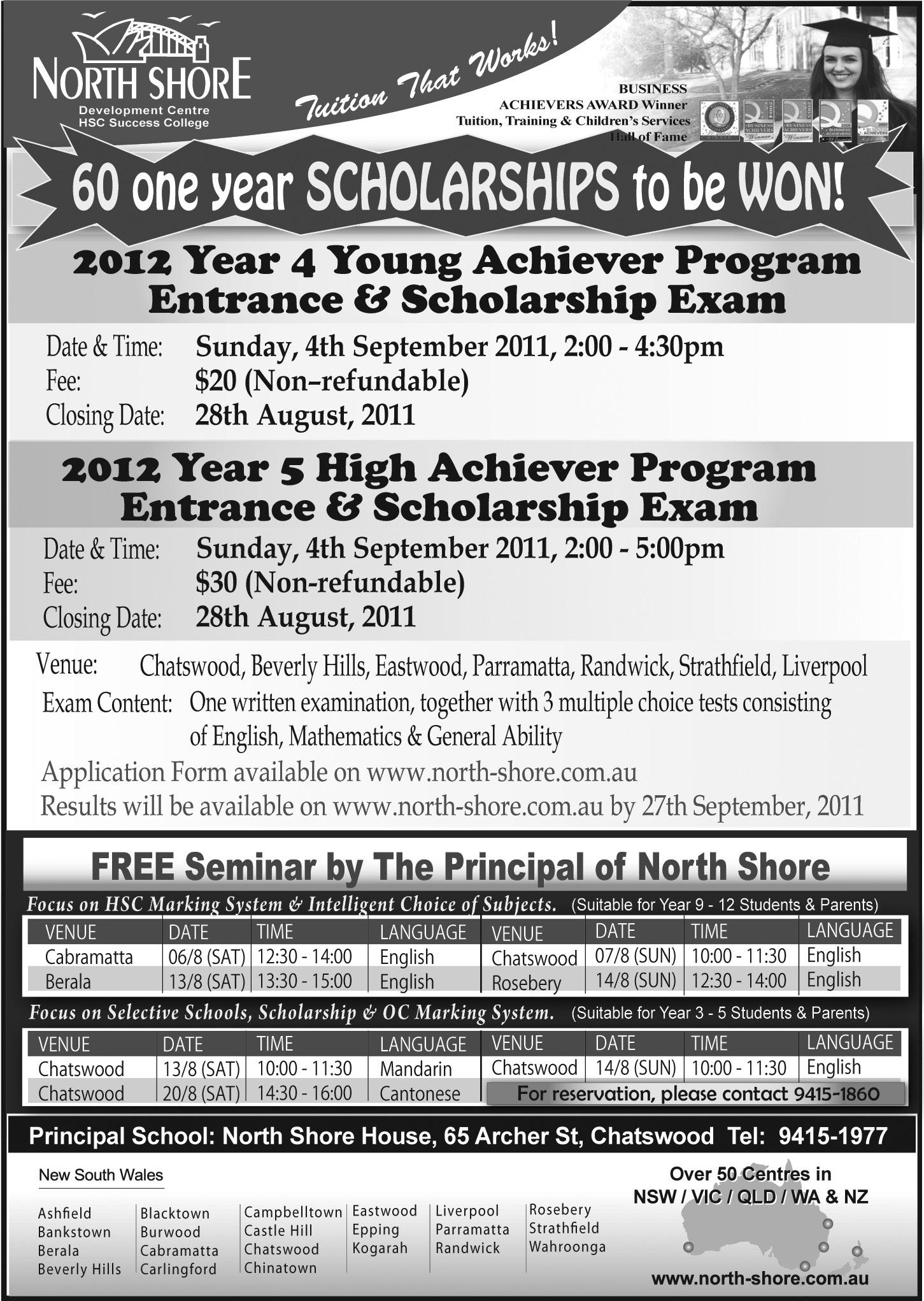


Communalism, terrorism big challenges to nation: Manmohan Singh
Communalism and terrorism were “big challenges” to national integrity and needed to be fought collectively, Prime Minister Manmohan Singh said in New Delhi recently.
Manmohan Singh, who was addressing a gathering at the National Communal Harmony Award distribution function, said “some elements in society” were promoting communal disharmony that need to be defeated.
“We have to face these challenges together. We have to create awareness towards this,” the Indian prime minister said in his address in Hindi.
“Communal brotherhood forms a large part of our age old traditions. We have to keep up with this legacy. This is our pious duty,” Manmohan Singh said at the event also attended by Home Minister P. Chidambaram and Bharatiya Janata Party (BJP) leader L.K. Advani.
Vice President Hamid Ansari gave away the awards for the year 2009-10 to Mohammad Hanif Khan Shastri, who has written seven books on Hindu-Muslim unity in India. Khan got the award in the individual category.
The Center for Human Rights and Social Welfare got the award in the organisational category. The Rajasthan-based NGO is known to have organised interfaith dialogues and rallies to promote communal harmony and national integration in the country.
Positive talks integral to normalising ties: Hina
An uninterrupted, constructive and positive dialogue process was integral to resolve all outstanding issues and normalise relations between Pakistan and India, said Foreign Minister Hina Rabbani Khar.
Khar was speaking to mediapersons in Lahore after returning Thursday from New Delhi where she held talks with her Indian counterpart S.M. Krishna.
India and Pakistan have sought to open a new chapter of “peaceful and cooperative” ties by pledging to intensify counterterror cooperation and unveiled a host of initiatives to spur trade and travel between the divided halves of Kashmir.
Khar, who is the country’s first woman foreign minister, said Pakistan and India are well aware of the challenges faced by both countries and they also understand the need to ease tension, reported Associated Press of Pakistan.
Khar said that an uninterrupted and result oriented dialogue could lead both the countries and the whole region towards peace and prosperity.
Besides Krishna, Khar had met Indian Prime Minister Manmohan Singh and opposition leaders during her trip. She said she found that all of them were looking forward for better ties with Pakistan which was very encouraging sign.
She said Pakistan aims at improving relations with India through medium term, uninterrupted and constructive talks which were vital for peace in the region.
The minister said that during the visit both the countries also agreed to initiate Confidence Building Measures (CBMs) through trade and travel agreements.
India has no place in world order: Brajesh Mishra
Arguing that India has “no place in the world order” currently, former national security advisor (NSA) Brajesh Mishra has said the country has to step up economic reforms and strengthen military capabilities if it wants to overcome the situation.
“I am a blunt man... Sorry to say we have no place in the world order” now, Mishra said while delivering the inaugural K.
Subrahmanyam memorial annual lecture in New Delhi recently.
West Bengal Governor and another former NSA, M.K. Narayanan, presided over the function, organised by the Global India Foundation (GIF), in memory of Subrahmanyam, India’s eminent strategic expert, who died Feb 2 this year.
The global situation and the policies of the United States has pushed India to a limited role, engaged and embroiled with two enemies - Pakistan and China, Mishra said.
He said that the situation can be altered if the country break out of the present style of governance.
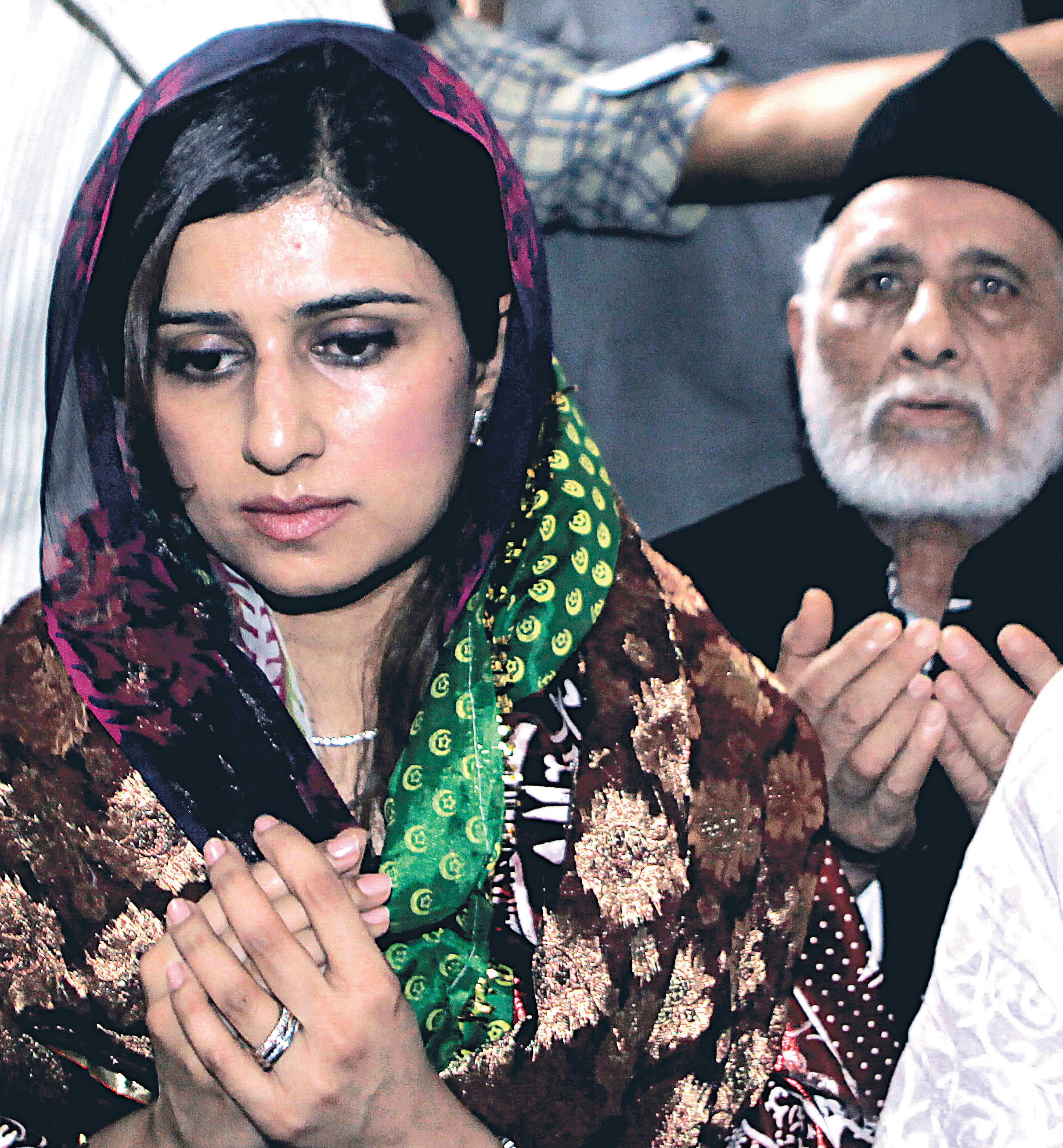
“Economic reforms appear to have stopped mid-way,” Mishra said.
Important defence purchase deals are delayed to ensure personal integrity, he added.
“If the current defence purchase pace continues , many equipments will be obsolete when they arrive after ten years or so,” he contended, adding the purchase procedures followed at present were of the 19th century.
The former NSA said that China has objected to adding India to the Asian Group of 3 - China, Japan and South Korea. He said China and Pakistan were militaristic allies.
He said though the US was not keen on better relations with India postdisintegration of the Soviet Union, it changed the policy gradually.
Now, India should look beyond the ties with the US and strengthen its relations with the European Union, ASEAN countries and the Asian powers, Mishra said.
In his remarks, Narayanan said Subrahmanyam was the among the first to observe in 2004 that the US was keen on wider ties with India. This culminated in the Indo-US Civil Nuclear Treaty , he added.
Vice Admiral (retd.) P.J. Jacob, who is the chairman of the GIF, and Arundhati Ghose, India’s former permanent representative to the UN Conference on Disarmament also spoke at the function, attended by union Minister Saugata Ray, diplomats and academics.
India given choice to pioneer naval Typhoon jet
In anticipation of winning the Indian Air Force’s $10.4 billion tender for 126 combat jets, European consortium EADS has offered India a choice to pioneer a project for a naval version of the Eurofighter Typhoon that is in the fray in what is being described as the “mother of all defence deals”.
Typhoon’s competitor in the medium multi-role combat aircraft (MMRCA) tender, the French firm Dassault’s Rafale, already has a naval version that is operational on France’s lone nuclear-powered aircraft carrier Charles de Gaulle.
Officials of BAE Systems, one of the four partner companies in EADS for the Typhoon programme, said that India can exercise the choice of being a partner nation and leading the programme for the carrierborne version of the aircraft if it wins the MMRCA tender. At present, Britain, Italy, Spain and Germany are partners in the Typhoon programme.
According to the BAE Systems officials, the Typhoon, which is a shore-based combat jet, has the potential to be a carrier-borne aircraft, provided a few modifications are made to the aircraft itself, essentially in a ski-jump take-off configuration due to the thrust-vectoring 90 kN (kilo Newton) engine that powers it.
Among the changes, it identifies strengthening of the undercarriage of the aircraft to assist in hard landings on a carrier’s deck, fitting a carrier hook for arrested landings, and a good paint coating to help it withstand the vagaries of nature at sea.
The choice of the Typhoon for the Indian Navy the officials said, will complement the experience of operating the British Sea Harrier vertical-landing carrier-borne aircraft on board its lone aircraft carrier, INS Viraat, for over two decades now. Of the nearly 30 Harriers India had got for INS Viraat, only about 10 are left in service, with the rest lost in air crashes.
The offer has been made keeping in mind the Indian Navy’s request for information issued in 2009. But the Indian Navy itself is not very amused with the offer.
First, according to officials, the Indian Navy plans to induct the Russian-built Admiral Gorshkov or INS Vikramaditya in the next couple of years. This warship will deploy Russian MiG-29K naval fighter jets and for this, the vessel is being reconfigured into a ski-jump take-off but arrested landing (STOBAR) mode at the Sevmash shipyard in Russia.
Nileema Mishra to donate Magsaysay prize money
Nileema Mishra, one of the Magsaysay Award winners this year, has decided to donate the entire prize money to her rural microcredit project, her family member said. “In the past, she has got around half a dozen small awards, and every paisa she donated to her cause. Even the prize money from Magsaysay Award will go to Bhagini Nivedita Gramin Vigyan Niketan (BNGVN),” her elated father Chandrashekhar Mishra said.
The award carries a purse of $50,000 (Rs.22 lakh).
The third of his four children, Mishra said that the family and the entire town of Bahadarpur with a population of around 10,000 is “proud that her selfless social service has been accorded international recognition”.
Mishra will accompany Nileema to the Phillipines - her first foreign trip - for the award ceremony. The duo will leave from Mumbai Aug 24.
Mishra said that since her early childhood, when she was less than ten years old, Nileema had made a name for herself in the neighbourhood by her outgoing and helpful nature.
“She had this passion, or craze you may call, for helping people, sometimes by sacrificing her own time and resources, making her a very popular figure in the town,” Mishra said.
When she went to Pune to complete her Master’s in clinical psychology, Nileema came in contact with children of well-known personalities, Mishra said.
Though Nileema hailed from a middleclass rural background, it was her helpful nature that made her instantly popular. Her resolve at the age of 13 not to get married and to devote herself to rural social work was strengthened when she travelled all over India while working with an NGO, Vigyan Ashram, near Pune, for eight years after graduation.
“Even today, many of her old classmates and friends, some of whom belong to the biggest industrial or political families in the state, treat her affectionately. ‘Do not give charity and make people dependent. Instead, make them self-sufficent and independent to face life,’ - they always advised her, and she heeded them. They are ready to spend any amount for making people self-reliant and stand on their feet. Her work is proof of it,” Mishra explained.
The knowledge that she acquired from her domestic travels prompted her to set up the BNGVN, which is today a force to reckon with in rural Maharashtra.
Originally from Uttar Pradesh, the Mishras are settled in Maharashtra since seven generations. “At home, we speak Hindi with a lot of Marathi words thrown in,” Mishra laughed.
Nileema’s mother Nirupama hails from Kanpur, while her two sisters are married and settled in Nashik and Pune.
Their only brother Shailendra is an area manager with a Pune-based pharmaceutical company, currently based in Mehsana, Gujarat.
Kashmiris love their mutton, all 51,000 tonnes of it!
About 85 percent of Kashmiris eat nonvegetarian fare - but exactly how much?
Official statistics say Jammu and Kashmir annually consumes a whopping 51,000 tonnes of mutton worth worth Rs.12.06 billion (over Rs.1,200 crore), of which 21,000 tonnes is imported from outside.
“The 21,000 tonnes is in addition to 30,000 tonnes of mutton produced locally and costing Rs.7.02 billion (Rs.702 crore) which also goes into the local consumption each year,” a senior official of the animal husbandry department said.
Despite having some of the best meadows and pastures in the world, all the mutton imported into Kashmir comes from Rajasthan, which has some of the most arid deserts in the country.
In addition to mutton, poultry and poultry products are also imported into the state from neighbouring Punjab and Haryana.
“Chicks, broilers, layers and eggs amounting to Rs.1.2 billion are imported each year for local consumption,” said another official of the state animal husbandry department posted with the poultry production wing.
“This is in addition to the local poultry production worth Rs.1.8 billion that also goes into local consumption.”
The officials say 84 percent of the state’s 10 million population is predominantly nonvegetarian.
Some say the high consumption of meats could explain the wide prevalence of certain ailments.
“My god, these are Herculean figures and they explain the reason for high blood pressure, obesity, high cholesterol levels, heart ailments, gout, kidney stones, liver ailments and a host of other diseases the locals are vulnerable to because of their dietary habits,” said Kaisar Ahmad, a general practitioner here.
The sheer amount of mutton and poultry that goes into the preparation of the traditional Kashmiri cuisine called ‘wazwan’ is mindboggling.
“An average middle class marriage requires about five quintals of mutton and one quintal of poultry. Those who haven’t seen the extended wazwan feasts where courses over courses of dishes are served in an unending pageant are really flabbergasted by the extravaganza when they experience it the first time,” said Sujeet Kumar, a police officer belonging to Haryana said.
“It is common in the Valley for people to ask if anyone in the family had taken ill, if they find a local carrying vegetables or fruit home!” said Bashir Ahmad War, a retired veterinarian.
Fortunately, with growing healthcare awareness, especially among youth, the dietary habits of locals are gradually changing for the better.
Computers to monitor midday meal scheme
Quality of food, stocktaking and complaints. All these and more will soon be streamlined with the central government finalising plans for a computerised monitoring system of the midday meal scheme that reaches out to 110 million children across the country.
The world’s largest school feeding programme, which covers children in 1.5 million schools and educational institutions and has helped increase literacy, will soon be more effective, promise officials.
“Of the 11 crore (110 million) school students that come under the midday meal scheme, 37 percent or four crore (40 million) children are extremely poor and belong to very needy families,” Amarjit Singh, joint secretary in the human resource development (HRD) ministry, said.
“To make the midday meal programme more effective and purposeful, computerised monitoring systems of the scheme are being introduced across the country,” he stated.
The National Informatics Centre (NIC), under the union ministry of information technology, has developed an Integrated Voice Response System (IVRS) as a monitoring tool.
Under the new system, the teacher incharge of the midday meal programme will feed information to the IVRS through the mobile. This information will be automatically conveyed to the district administration for appropriate action.
“The quality of food being served through the midday meal programme, checking to see whether one month stock of food is available in advance, whether there is any complaint about the scheme... it would be monitored among others under the new system,” Singh said.
He said the computerised monitoring system was essential as the present manual supervision systems were not effective in the remote, backward areas of the country and in the mountainous northeastern region.
Singh was here with other senior government officials to conduct a two-day regional workshop on the midday meal programme. The workshop was attended by officials of the eight northeastern states and West Bengal.
Similar regional workshops were held in Jaipur, Hyderabad and Lucknow.
Fahimuddin Dagar, golden voice of Dhrupad, falls silent
A golden voice of Indian classical music has fallen silent with the death of Ustad Rahim Fahimudddin Dagar, a doyen of the Dhrupad school who was said to be a descendent of legendary Mughal musician Tansen’s guru. He was 84.
Dagar died here Wednesday night after battling a long illness at a private hospital, dealing a blow to one of India’s oldest musical ‘gharanas’ that he and his illustrious clan were instrumental in taking to younger audiences across the country and abroad.
Dagar had been admitted to hospital April 23 after a paralytic attack.
The vocalist was a senior exponent of the Dagar Vani Dhrupad school of music. He kept the historic legacy of dhrupad alive with unforgettable performances spanning more than the last six decades.
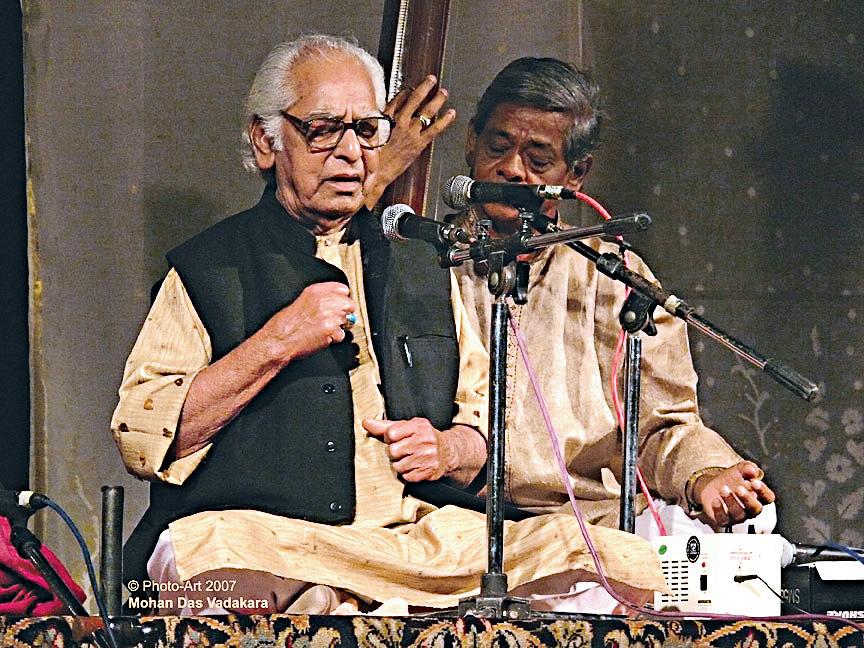
Dagar is survived by a wife and a daughter.
He was awarded the Padma Bhushan in 2008 and was honoured with the Sangeet Natak Akademi Ratna Puraskar in 2010. He was born in Alwar, Rajasthan, in 1927.
Film industry has become a dirty game now: Sanjay Dutt
Sanjay Dutt is still getting plum roles after three decades in Bollywood and a life dotted with controversies. He is happy with his professional graph but says that the film industry is no longer the family it used to be and that the changing attitudes of people upset him.
“A lot of changes have taken place in the industry and I sometimes feel very sad with most of them. When we were introduced to the industry, there used to be competition among actors, but there used to more respect,” Sanjay, who made his acting debut with “Rocky” in 1981, said in an interview.
“There used to be more togetherness. The film industry used to be a family. Now that is not the case. It has become a dirty game now. I’m not a part of that game, I do my own stuff, but I have noticed that and it is very sad,” added the actor who has so far worked in more than 130 movies.
The 51-year-old, who has a pair of twins with wife Manyata, does not follow the socalled camp system and believes in working with all.
“I’m not here to mend things or break things. I consider every actor my brother. I still consider this industry my family. I don’t believe in camps and all that. Shah Rukh (Khan) gave me respect, so I will respect him too. Similarly Salman (Khan) gave me respect, so I respect him. All are my brothers and I don’t believe in anything else,” he said.
Sanjay shot for a cameo appearance for Shah Rukh’s ambitious home production “Ra.One” and he has teamed up with Salman to co-host the fifth season of “Bigg Boss”. The actor, whose life has seen many personal problems, tries to stay out of the rat race and industry-related controversies. He was convicted for illegal possession of arms in connection with the 1993 Mumbai blasts. He has never been very media-savvy. Even in today’s age when promoting films and being in the spotlight is considered integral to a film’s promotion, the actor of films like “Naam”, “Sadak”, “Khal Nayak”, “Vaastav” and “Munna Bhai M.B.B.S” rarely indulges in promotional work.
When asked why, Sanjay, popularly called Sanju Baba, replied: “There is no reason. I think it’s just that I’m very lazy. Also, I feel that a film speaks for itself. But it’s quite confusing because it is important to inform the audiences also and create curiosity around the film. I think I just need to stop being lazy now.”
Looks like he is willing to change. Sanjay is taking part in the promotion of his forthcoming release film “Chatur SinghTwo Star”, based on the novel “Chalaak Jasoos”.
Produced by Mohammed Aslam and Parag Sanghvi and directed by Ajay Chandhok, the film also stars Suresh Menon and Amisha Patel in lead roles. It is slated to hit the screens Aug 19.










